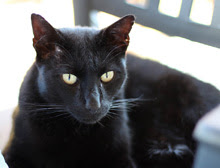Chinon, the town, is a wonderful place to wander around in. It's sandwiched in between the flanks of the plateau on which the castle sits and the river below. It's much less touristy a place than Azay, with shops, restaurants and cafés, and a weekly market that serve the local population (les Chinonais).
While Chinon was originally a gallo-roman stronghold, the fort and castle that are there today date from the time of King Henry II Plantagenet, king of England in the 12th century. This part of France then belonged to England. Henry and his second wife, Eleanor of Aquitaine, are buried not far from Chinon at the abbey of Fontevraud.
Two of their sons, Richard the Lionhearted (Richard Cœur de Lion) and John Lackland (Jean sans Terre), each made Chinon their base of operations when they succeeded Henry as king. The Hollywood movie, "The Lion In Winter," starring Peter O'Toole and Katherine Hepburn, was set in and filmed partly in Chinon.
In addition to its château and historic town, Chinon is a well-known and respected wine region of France. The principle varietal grown in the area is cabernet-franc. Apparently the ancestors of this grape were brought to the region by the romans, and it was widely cultivated in the area during the time of Henry II Plantagenet.
Ken and I have made several special trips to the Chinon area to buy wine since we moved to the Loire region in 2003. It's a great day trip for us that includes lunch (summer picnics are fun), a little sightseeing, and tasting before we buy.
* * * * * * * * * *
By the way, I forgot to mention a few posts back that the inhabitants of Amboise are called les Ambaciens and the people of Vouvray are les Vouvrillons. Most of my information about these places comes from the Guide Michelin. The photos are mine (shameless plug).










No comments:
Post a Comment
Tell me what you think!